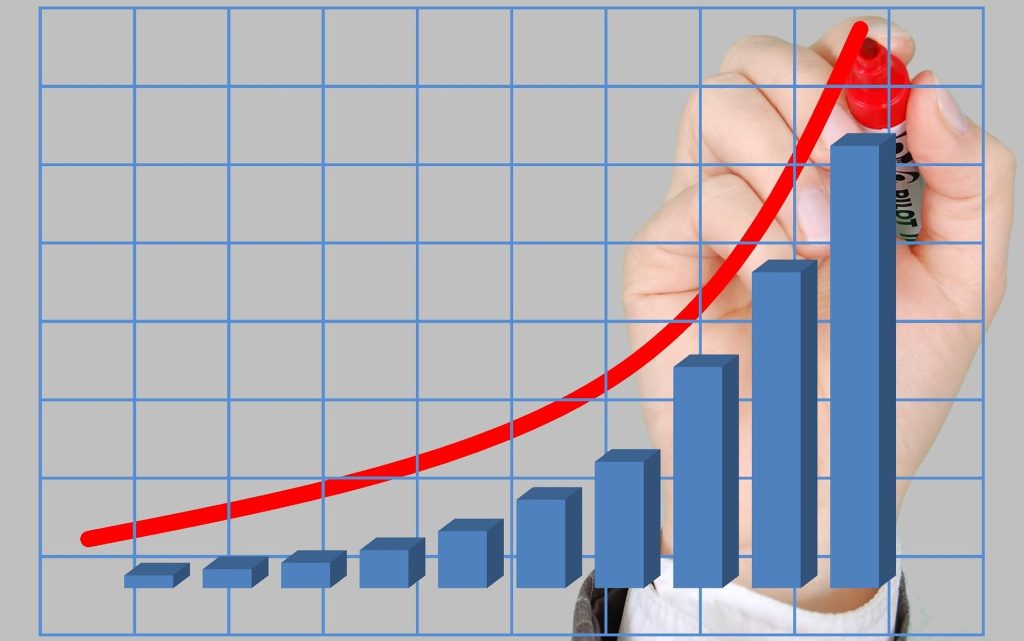BLOGS
Inflation Report: Consumer Price Index Relation to Real Estate
You will surely agree that the increase in the prices of food and services has drastically changed the way we budget and purchase things.
You will surely agree that the increase in the prices of food and services has drastically changed the way we budget and purchase things.
The main culprit in this is inflation which means a continuous increase in the average cost of goods and services, even a particular industry such as real estate across an economy. Additionally, it shows that a currency used in the market has lost some of its purchasing value.
However, if you’ve been thinking about investing despite the current economic condition, keep reading to learn how the inflation rate may impact your housing and real estate purchases.
What is the Philippine Inflation rate in 2022?
In the Philippines, the annual inflation rate increased from 6.9% in August to 7.7% in October 2022, exceeding market expectations of 7.1%.
According to a statistics agency, the average inflation rate for the nine months leading up to September was 5.1%, well above the central bank’s target range of 2% to 4%. The September inflation rate, which was higher than the 6.7% predicted in a poll, was primarily driven by high food and utility prices.
This is the highest recorded inflation since December 2008 in the country.
Inflation Rate Factors: What causes inflation in the Philippines?
Several factors cause inflation in our country. Some economists blamed the Russia-Ukraine war on the increased global oil process and other global commodities.
Some related inflation to the global pandemic caused a lockdown in China, the world’s second-largest economy.
But a significant driver of inflation in the Philippines was brought by Super Typhoon Karding damaging Central and Northern Luzon provinces which are the biggest producers of rice, corn, vegetables, and other food and agricultural products.

What are the effects of the rising inflation or inflation rate in the Philippines?
- Your ability to buy will be reduced – The decline in consumer spending is inflation’s most evident effect. Many people see effects on their budget as their purchasing power declines. For others, this could be a reduced level of living and giving up luxuries to buy necessities. However, individuals with low incomes or fixed incomes frequently suffer the most.
- Your fixed income will be insufficient – Making ends meet can get more and more difficult when everything in the market increases. The rate of inflation would also affect retirees who depend on pension benefits and others with fixed incomes. Their normal pension may no longer be sufficient to support their way of life due to the increase in the cost of basics like food, medicine, and utilities.
- Raise in Interest Rates – Continuous inflation indicates an overabundance of money. And raising interest rates is one approach to lessen the amount of money in circulation in the economy.Interest rates are raised by central banks to reduce borrowing and slow the rise in prices. You tend to save more by making budget cuts when interest rates climb. Money becomes more expensive and scarce as a result of the decline in the money supply.This has a significant effect on households across the nation because the ordinary consumer uses borrowing to make major purchases, like a home or vehicle, a reality. You will bear more charges due to increasing interest rates if you have any debt with a variable interest rate.
- Your Living Expenses will Increase – When the prices of products and services rise, as a consumer, you will spend a larger proportion of your income in order to retain your existing levels of life.Even if your income increases due to inflation, you’ll probably be shifted into a higher tax bracket.
- Your capacity to save will be decreased – A high rate of inflation makes it likely that you won’t have enough money set aside for retirement, education for your children, unexpected medical expenses, and your business. This could have an impact on your future goals.
Types of Price Indexes
By creating inflation indices, inflation is measured. The amount that prices have changed over time is indicated by inflation indices, which are used to calculate inflation rates. The indexes themselves serve as a reflection of a certain moment’s price level.
Only a predetermined basket of goods and services is included in the index, not all prices. The products that are pertinent to a market or group are represented by the basket in the index. As a result, there are several price indexes for the prices that various groups must pay. As follows:
- WPI, or the wholesale price indexPrices for products sold in the wholesale market, or the market where bulk purchases are made for later sales, are included.
- The CPI, or Consumer Price IndexIt covers retail market prices for products and services, i.e., the final costs that customers must bear. As a result, it is also known as the cost of living index. It is also used to index employees’ dearness allowances in response to price increases.
- The PPI, or Producer Price IndexIt covers the prices of the first commercial exchanges of commodities and services, or the exchanges at the point of first sale, often known as producer or output prices. Public utilities and the industrial (manufacturing) sector are typically covered by the PPI. Agriculture, mining, transportation, and business services are also present in several nations. The producer prices do not include taxes or transportation costs, whereas the WPI prices include.
- Using the GDP DeflatorThe value of all the products and services generated in an economy in a given year is known as the Gross Domestic Product, or GDP. Production, transportation, and commercial services. Value is defined as the total quantity of goods and services (total output) multiplied by their respective prices.
- Private Final Consumption Expenditure Deflator:Through the analysis of this deflator, the movement of the nation’s consumption pattern can be determined. The cost borne by households is known as the private final consumption expenditure, and its deflator calculates the change in it by dividing its value at current prices by its value in the base year (at constant prices).

What is the relationship between the consumer price index and inflation rate?
The CPI, or Consumer Price Index, is used to calculate an economy’s inflation rate and the purchasing power of its currency. The CPI measures the change from a base year in the average retail prices of a fixed basket of goods and services typically purchased by typical households. It is a significant data series used in economic analysis, evaluation, and as an indicator of governmental economic policy. The CPI change from one year to the next, stated in percent, is the inflation rate.
The CPI is the most commonly cited indicator of inflation, closely followed by other indicators utilized by policymakers, the financial sector, companies, and consumers.
What is the consumer price index for housing?
According to Philippine Statistics Authority, the consumer price index increased to 117.90 points in October from 116.80 points in September of 2022.
CPI Housing Utilities in the Philippines increased to 115.10 points in October from 114.60 points in September this year.
Government-set interest rates frequently have an impact on mortgage rates as well as other types of long-term debt. Rates frequently rise as the CPI rises and the government implements policy actions to control inflation. However, landlords can accurately determine what annual rent increases for tenants should be using CPI data.
In spite of the inflation rate continuing to climb in 2022, the GDP of the Philippines is anticipated to expand faster within the government’s goal range of 7-9%. Second-quarter economic growth is anticipated to pick up speed as community quarantine rules loosen even further. Despite the fact that gasoline prices are at an all-time high, transportation of commodities is no longer a concern and mobility is no longer an issue. Nevertheless, it is anticipated that the economy would continue to grow at a target rate of 6-7% in 2023.

Invest in Real Estate Amidst High Inflation
Businesses and consumers safeguard their funds in non-liquid assets like fine wine, real estate, gold, stocks, and bonds during persistent inflationary periods. These assets’ prices rise more quickly than the cost of other goods and services and outpace inflation.
Some homebuyers are priced out of the market as interest rates climb. However, individuals who can still afford a property might begin to notice less competition. Lack of competition may make it easier for you to purchase a home.
But when it comes to investing in real estate, it is important to be smart and cautious. Because of inflation, it is essential to examine your finances and see what you can actually afford.
Interest rates typically rise along with inflation when it is high. This means that you should prepare to pay higher interest rates if you plan to use a mortgage to finance your real estate acquisition. Once more, doing your research and working with an experienced lender can be quite beneficial.
Timing is key if you’re trying to buy a house as an investment. When prices are low, you want to purchase, and when they’re high, you want to sell. Of course, it’s easier said than done, but there are times of the year when prices tend to be very low.
Additionally, you must be knowledgeable about the state of the market in your area. Prices in your city may not necessarily decrease just because there is a nationwide slump. They might even increase if more people relocate to your city in quest of better employment opportunities.
So, if you’re considering investing in real estate, pay close attention to both local and global market conditions. By doing this, you’ll be able to timing your buy well and possibly get a good return on your investment.
If you keep on searching, Brittany’s Properties offers great deals and makes sure that you have made a wise decision despite these uncertain times!
Suggested Read: The Impact Of Inflation Rate On Real Estate Investors
Suggested Read: Stock Market Forecast For The 2nd Quarter Of 2022
Suggested Read: Top Reasons Why You Should Invest In Real Estate
Suggested Read: 7 Benefits Of Buying A Luxury Investment House
Suggested Read: The Different Types Of Mutual Funds















